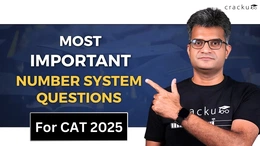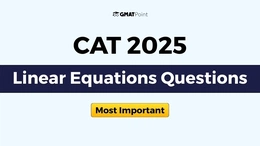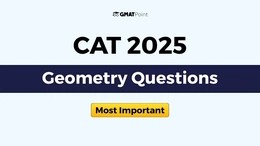Profit & Loss Questions for CAT 2025
Getting ready for CAT 2025? Then you must be good at Profit & Loss. It's one of the easiest and most scoring topics in the Quant section. Even though the basics are simple, CAT likes to twist the questions to check your logic and quick thinking.
This profit and loss questions PDF you’ll download has a great mix of problems, like:
-
Real-life cases where someone cheats or gives discounts
-
Shopkeeper and customer-based questions
-
Profit or loss in two or more steps
-
Confusing price tags and discounts
-
Tricky questions that need clear understanding
Each question in the PDF is designed to match CAT’s level of difficulty and comes with detailed solutions. So you don’t just get the answers—you understand how to solve them smartly.
CAT Profit & Loss Important Formulas
Formulas make solving Profit and Loss questions in CAT 2025 much faster and easier. They help you avoid mistakes and handle tricky problems, especially when mixed with topics like percentages or discounts. To help you revise better, we’ve listed all the important formulas in one place. Download the Profit and Loss Formula PDF for CAT 2025 here
Download CAT Profit and Loss Formula PDF
| Concept | Formula |
|---|---|
| Profit | SP - CP |
| Loss | CP - SP |
| Profit % | (Profit / CP) × 100 |
| Loss % | (Loss / CP) × 100 |
| SP (Profit %) | SP = CP × (1 + Profit%) |
| SP (Loss %) | SP = CP × (1 - Loss%) |
| CP (Profit %) | CP = SP / (1 + Profit%) |
| CP (Loss %) | CP = SP / (1 - Loss%) |
| Discount % | (Discount / MP) × 100 |
| Net Gain (2 successive profits x & y) | Net % = x + y + (xy/100) |
Quick Tip: Understand each formula’s logic. Don’t rely on rote memorization, especially when facing mixed-concept questions.
Also Read, CAT Questions, 5000+ QA, DILR, VARC Questions & Solutions
Types of Profit & Loss Questions Asked in CAT
The PDF includes 30 well-structured questions that demonstrate the most common CAT question types:
Cheating in Transactions
Ex: False weighing, adding water to milk, or less quantity sold.
These questions test your conceptual understanding and require calculating the actual cost vs. perceived value.
Marked Price and Discounts
Ex: A dining set is marked at ₹4000 and sold with a discount while earning a profit.
Here, you must work backward from SP and MP to find CP or profit%.
Chain Transactions
Ex: A computer is sold from A to B to C to D, each making a profit.
Such problems assess your ability to track percentage changes across multiple stages.
Smart Trap Questions
Ex: Discounts stacked successively, or profit calculated on increased CP while SP remains constant.
Real-World Business Decisions
Ex: Amazon adjusts its discount to move from loss to profit.
These are relatable and test your aptitude for practical decision-making.
Most Important CAT Profit & Loss Questions
Question 1
A sum becomes 5 times of itself in 3 years at compound interest (interest is compounded annually). In how many years will the sum becomes 125 times of itself?
correct answer:- 1
Question 2
A shopkeeper offers a discount of a% on the marked price of his article. One day, a lady who is good at bargaining visits his shop and somehow manages to get an article at 2a % discount. What is the successive discount the shopkeeper had to offer on the initial discount of a % to the lady?
correct answer:- 3
Question 3
Ramesh buys mangoes from the fruit market and sells them to customers. The price at which 12 mangoes are sold equals the cost price of 20 mangoes. Similarly, the selling price of 9 mangoes equals the marked price of 3 mangoes. Let x denote the markup percentage, and y denote the discount percentage. What is the value of x/y, closest to the nearest integer?
correct answer:- 4
Question 4
Raju borrowed a sum of Rs. 12000 at 10% compound interest per annum from Ravi. If Raju repaid the amount in 3 equal installments, with each installment to be paid at the end of the year.Find the value of each installment.
correct answer:- 2
Question 5
An article has incurred a surge in its price thrice in the last year by 8%, 12% and 25% respectively. In order to gain the market share, the seller gives successive discounts of 10% and 20%. Find the difference between the mark-up percentage and the discount percentage given on the article.
correct answer:- 1
Question 6
Some part of Rs.9500 was lent at the rate of 15% per annum simple interest and the remaining part at the rate of 20% per annum simple interest. The total interest received after $$\frac{3}{2}$$ years is Rs.2565. What is the ratio of money lent at the rate of 15% and 20%?
correct answer:- 3
Question 7
Aman sold his cycle at a loss of 10%. Had he sold the cycle at Rs. 112 more than the current selling price, he would have gained 10%. What would be the selling price of the cycle in order to have a profit 25%?
correct answer:- 2
Question 8
A wholesaler cheats a retailer while selling rice to him by $$10\%$$ (he gives $$10\%$$ less rice for the same price). The retailer keeps the price the same as the wholesaler but cheats his customers by $$20\%$$ while selling it. What is the percentage profit of the retailer?
correct answer:- 2
Question 9
A sells a car priced at Rs. 36,000. He gives a discount of 8% on the first Rs. 20,000 and 5% on the remaining Rs. 16,000. B also sells a car of the same make, priced at Rs. 36,000. He gives a discount of 7 % on the total price. Calculate the actual prices charged by A and B for the cars.
correct answer:- 4
Question 10
Gugan sold a computer to Raj by marking the price up by 20%. Raj then sold the computer to Hari at a profit of 30%. Hari sold the computer to Balu at a profit of 50%. If Balu bought the computer by paying Rs. 1560 more than the price at which Hari bought the computer, what is the actual cost price of the computer?
















